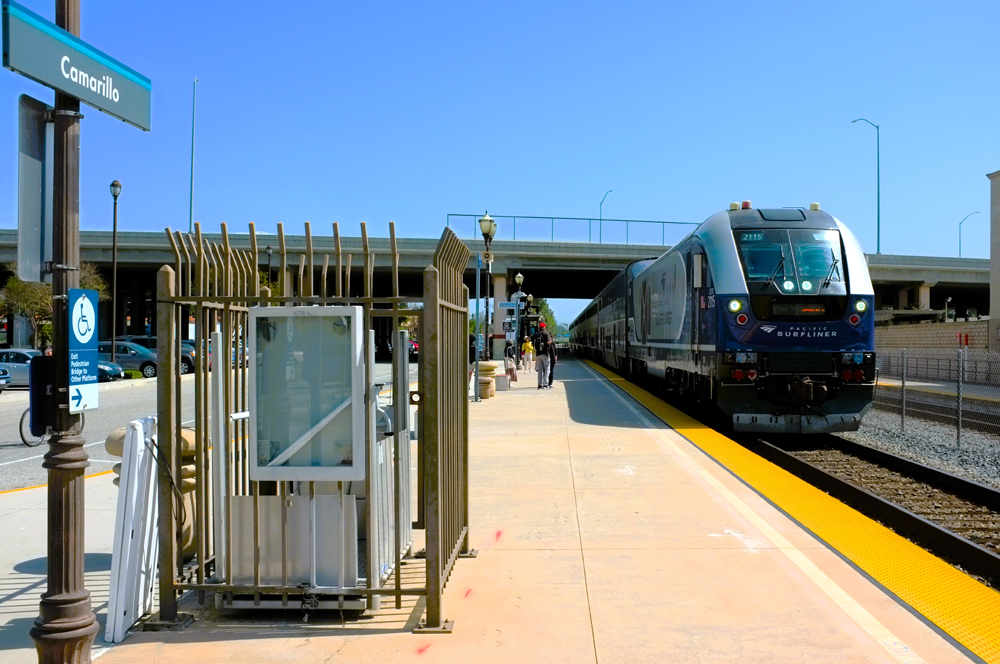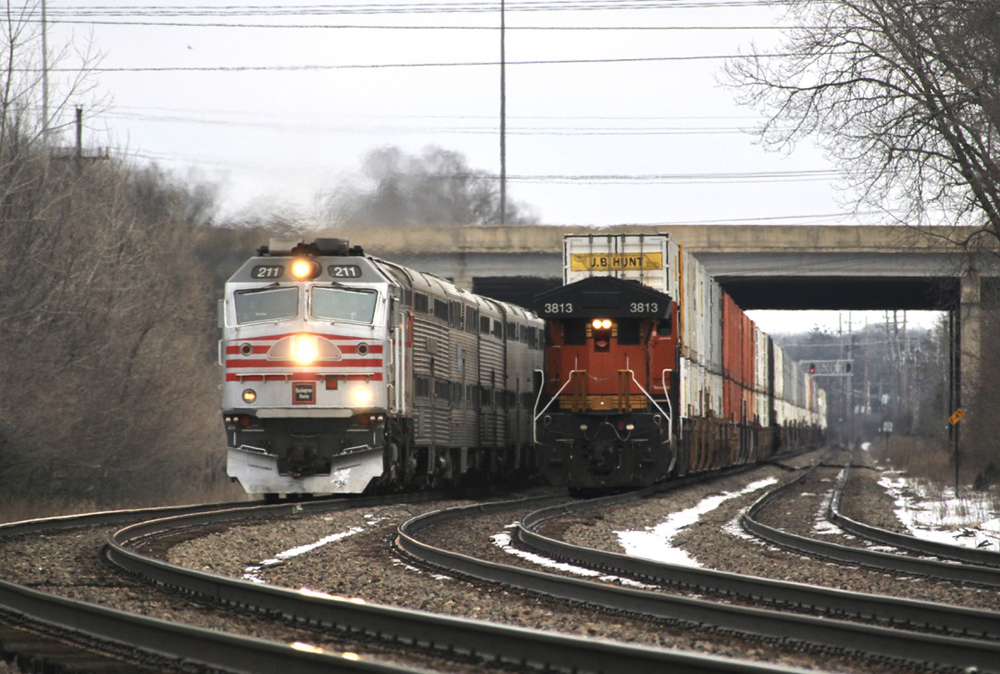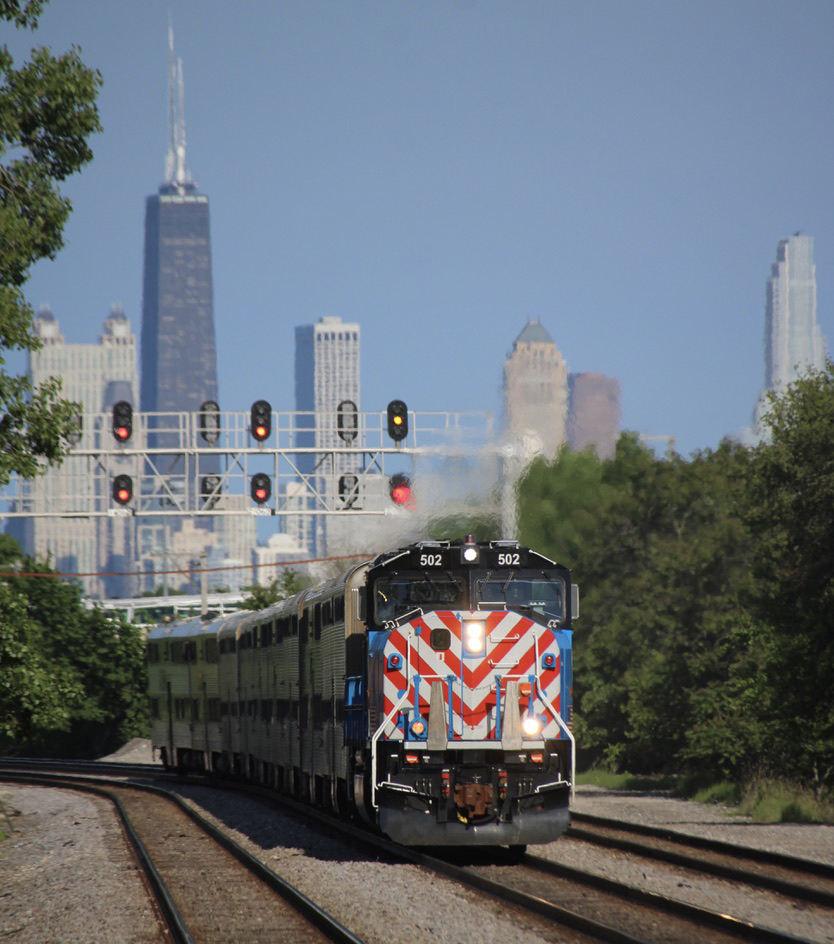Calling all railfans…

As railfans, most of us flock to the railroad’s hotter, more congested lines. And why not? If you are going to take an hour or day in pursuit of the hobby, it is natural to want to get the most bang for the buck. Or in this case, the most trains you can see at one time.
It is one of the motivating factors that has driven me to make the Tehachapi Mountains, Cajon Pass, and San Gorgonio Pass here in Southern California my automatic mainline destinations. Work windows and weather aside, they always guarantee a good time.
But in the past few years I have realized that by concentrating on getting the most bang for the buck, I have neglected other, lesser trafficked routes, some rather close to my home.
Except for a diehard core of local fans, I have found that Union Pacific’s Coast Line, especially the southern portion between the Los Angeles area and the mid-California town of San Luis Obispo, sees far fewer fans than say, Cajon Pass.
The reason is obvious. Cajon can be a non-stop treat of train after train, while the Coast Line, most of the time, can be eerily quiet.
On a regular basis, there is only one freight train between here, the Guadalupe local that starts at Gemco Yard in Van Nuys. On select days it makes it way to Oxnard and then the small yard at its namesake in Guadalupe.
Here it disperses freight cars for the locals based there, and interchanges with Santa Maria Valley Railroad. It can be deceptive as it is usually powered by three or four six-axle road switchers hauling 40 to 60 cars, depending on the day’s traffic. But with the exception of an occasional move elsewhere, it is the only through freight that you will see.
Which makes the line pretty much the domain of Amtrak, and Metrolink, the latter Southern California’s regional commuter agency.
On one particular day a few weeks ago I decided to camp out at the “train station” — read concrete platform — at Camarillo, just south of Oxnard.
It is the same spot as the long standing two-story station established by Southern Pacific, where Camarillo used to have a lot of railroad activity. A number of Southern Pacific passenger trains stopped here, and more than a few smaller industries — mostly citrus packing houses and lumber yards — were switched by locals working from south out of Oxnard.
So then, railfans, why choose to look for trains on the sparsely populated Coast Line versus a more robust experience elsewhere?
A number of reasons, actually. First, I get a chance to think a little more about railroading. I wind up watching how today’s passenger rail service is integrated with local and regional bus schedules. Some people are being dropped off to both head in to Los Angeles, others, heading up the coast to Santa Barbara.
I also see railroading as more than just trains. It’s infrastructure, whether it be the bare-bones Camarillo platform, the various signals, the concrete benches, all blend into a smoothly working example of today’s railroading.
When my one train, a northbound Amtrak Pacific Surfliner came into view, I took but one picture and then just watched. It was gratifying to see passengers get off and on with all the nonchalance community planners had hoped for. No sooner had the train arrived, it departed and then the platform was quiet again.
I was hoping to bag one of Metrolink’s unique EMD F125s but my timing was off, and I didn’t read the timetable as well as I thought I did.
It will give me a good reason to come back.














Great article, David. As I complete 79 years of life and 63 years of active railfanning I prefer these days to find a quiet place and let the trains come to me. You and I met many years ago at Summit in the Cajon Pass. Perhaps we’ll meet again sometime at some good place for “senior railfanning”
I have lived on a couple of lines that did not have a lot of trains, Conrail’s Southern Tier from 1988-2006, and now the KCS. Both lines had between 12-20 moves per day, though not all of them covered the entire line. On the Tier, I could follow the line from Port Jervis NY to Silver Springs with decent road access most of the way-about 280 miles-and on the KCS from Neosho MO to Bunch OK, about 100 miles, also with reasonable road access most of that distance. Train speeds are moderate, so chasing is possible, and getting multiple photo locations is sometimes challenging in that you have to pick where you can beat a train, but there are multiple options. I have followed trains for some distance on each line. I currently live along the KCS in Siloam Springs Ark, so about midway through that distance.
The modest number of trains means that often, of an afternoon, I’ll go out and get between two and four trains between, say, Siloam Springs and Stilwell, or between Siloam and Neosho. Following them is fairly easy. If I can determine a meet is going to be held, I will set up for a shot knowing a train is en route. This allows me to get what a friend of mine calls “freights on the move in scenic locations,” a situation that abounds here. There are lots of pretty places, which makes up for the relatively low traffic levels.
That said, sometimes I want volume. In that case, I’ll go find a place on the BNSF Transcon to camp out, shoot some action, then move on to another spot, shoot some action, or just find a pretty spot and set up with a lawn chair and a cooler. This involves some travelling, since it’s a couple hundred miles at least to get to the ex ATSF, though sometimes the BNSF near Tulsa can be a good day. And if I want some bonzo action on UP, it’s a longer drive to the Overland Route, 400 plus miles to Omaha, and roughly 525 to Kearney. I’ll use the same approach there as on the BNSF. In the east, If I wanted a lot of action, I’d go to Enola(170 miles) or Syracuse(75 miles). When I still had relatives in the NY area, I’d check out the LIRR, which I grew up on. Trains galore!!
Sometimes a slower, less trafficked line can be fun, though I don’t know that I’d spend a whole day on it for just one train. In the case described, I’d be more likely to go shortly before the scheduled arrival, get the shot, and do something else. But being able to chase, and a good possibility of getting several trains has its appeal. But then, there are just times when you want to see a lot of trains, too.
David,
When up here in Ventura County why not a feature article on the Ventura County Rail Road (VCRR) serving the Port of Hueneme? Both the commercial and military sides of the port are on Navy Base Ventura County (NBVC). Trains must wait for base security to open a gate to enter the base.
James…I totally agree…
Sorry to be pedantic but usually with publishing we follow grammar rules:
Fewer is used to refer to number among things that are counted, as in “fewer choices” and “fewer problems”; less is used to refer to quantity or amount among things that are measured, as in “less time” and “less effort.”
And on the Coast Line, you get a chance to see up close the Santa Susanna Tunnel from Chatsworth Park. You can damned near walk right up to the tunnel itself.